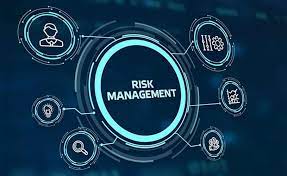Essential IT Controls Strengthening SecurityCompliance in the Digital Age

Essential IT Controls Strengthening SecurityCompliance in the Digital Age
Introduction
In an era where businesses rely heavily on digital infrastructure the importance of robust IT controls cannot be overstated These controls serve as the foundation for ensuring data security regulatory compliance the overall integrity of IT systems.
Understanding IT Controls
IT controls refer to the policies procedures measures put in place to manage monitor secure an organizations IT infrastructure. These controls serve multiple purposes including preventing unauthorized access ensuring data integrity facilitating regulatory compliance. They encompass a wide range of areas including access controls change management network security data encryption more.
Types of IT Controls
Access Controls
These controls manage user permissions restrict access to sensitive data or systems based on defined roles responsibilities. Examples include authentication mechanisms rolebased access, and least privilege principles.
Change Management Controls
Change controls regulate alterations made to IT systems ensuring that changes are authorized documented tested to minimize disruptions security risks.
Network Security Controls
These controls protect the network infrastructure from unauthorized access and cyber threats through firewalls, intrusion detection/prevention systems secure configurations
Data Encryption Controls
Encryption controls safeguard sensitive information by converting it into unreadable code thereby protecting data both in transit and at rest.
Backup and Recovery Controls
These controls ensure the availability of data by regularly backing up critical information implementing strategies for swift data recovery in case of incidents.
Implementing Effective IT Controls
Risk Assessment Prioritization
Begin by conducting comprehensive risk assessments to identify vulnerabilities and prioritize areas requiring robust controls.
Design and Documentation
Develop clear policies procedures guidelines outlining the implementation operation of IT controls. Document these controls to ensure consistency and ease of understanding for stakeholders.
Training and Awareness
Educate employees on the importance of IT controls and provide training on adhering to established protocols to enhance compliance and reduce human errors.
Regular Monitoring and Auditing
Continuously monitor and audit IT controls to ensure they remain effective and aligned with evolving security needs and regulatory requirements.
Role of IT Controls in Security and Compliance
Enhancing Security
IT controls play a pivotal role in preventing detecting responding to cybersecurity threats thereby bolstering an organizations overall security posture.
Enabling Compliance
By adhering to established IT controls organizations can meet regulatory standards and industry best practices, reducing the risk of non-compliance penalties and legal consequences.
Conclusion
In the digital age effective IT controls are indispensable for mitigating risks ensuring data security maintaining regulatory compliance By implementing a comprehensive framework of controls tailored to the organizations needs businesses can fortify their defenses safeguard sensitive information navigate the complex landscape of technology with resilience confidence.
mplementing robust IT controls within an organization yields numerous benefits crucial for maintaining a secure efficient compliant technological environment Here are key benefits of having effective IT controls
Enhanced Data Security
IT controls are fundamental in safeguarding sensitive data from unauthorized access breaches or theft By implementing access controls encryption monitoring mechanisms organizations can significantly reduce the risk of data compromise ensuring confidentiality integrity availability of critical information.
Risk Mitigation Management
IT controls assist in identifying assessing mitigating risks associated with the organizations IT infrastructure. By implementing controls tailored to specific risks businesses can proactively address vulnerabilities minimizing the likelihood impact of potential threats.
Compliance Adherence
Many industries are subject to stringent regulations governing data protection, privacy security Effective IT controls help organizations align with these regulations ensuring compliance with standards such as GDPR HIPAA PCI DSS others. Compliance not only mitigates legal risks but also fosters trust among customers and partners.
Improved Operational Efficiency
Well-defined IT controls streamline processes operations. They establish clear guidelines, procedures workflows reducing errors, redundancies, and inefficiencies. Automated controls can also speed up tasks, allowing employees to focus on strategic initiatives rather than routine tasks.
Prevention of Unauthorized Access
Access controls are a critical aspect of IT controls ensuring that only authorized individuals have appropriate access to systems and data. By implementing strict authentication mechanisms rolebased access controls least privilege principles organizations prevent unauthorized access potential insider threats.
Business Continuity and Resilience
Robust IT controls contribute to maintaining business continuity by ensuring systems are available, reliableresilient. Controls such as backup and recovery mechanisms help in swiftly restoring operations in the event of disruptions or cyber incidents, minimizing downtime and associated losses.
Protection Against Cyber Threats
IT controls including network security measures like firewalls, intrusion detection systems regular security updates, act as a frontline defense against evolving cyber threats. These controls help in detecting and mitigating potential cyber attacks, reducing the organization's vulnerability to breaches and malware.
Increased Stakeholder Confidence
Implementing maintaining effective IT controls demonstrates a commitment to security and compliance This fosters trust among stakeholders, including customers, partners, investors, and regulatory bodies, enhancing the organization's reputation and credibility.
Cost Savings in the Long Run
Proactively investing in IT controls is costeffective compared to dealing with the aftermath of a security breach or non-compliance penalties. Preventing incidents through controls saves potential financial losses, reputational damage, and legal liabilities.
In conclusion, implementing robust IT controls offers a myriad of advantages, ranging from fortifying security to ensuring compliance and operational efficiency. These controls are essential for organizations looking to navigate the complexities of the digital landscape while minimizing risks and maximizing resilience.